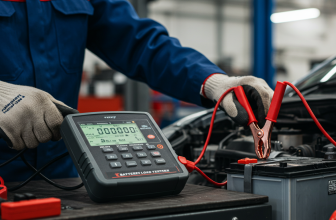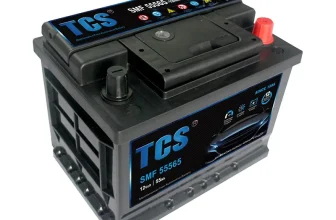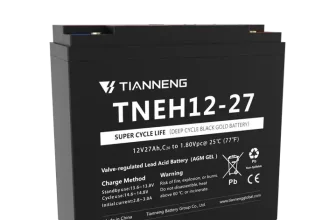Lithium Polymer Batteries, often abbreviated as LiPo, are a type of
rechargeable battery that has taken the electric RC world by storm. The
name ‘lithium polymer’ refers to a type of rechargeable battery
chemistry that utilizes lithium ions and a polymer electrolyte instead
of the usual liquid one found in other lithium-ion batteries. They
belong to a broader family of lithium-ion batteries, but what sets them
apart is the electrolyte they employ. Instead of a liquid electrolyte,
they make use of a polymer gel or solid electrolyte. The power that
these batteries can deliver is immense, making them highly desirable for
use in high-performance devices. The versatile and flexible nature of
these batteries allows them to be made in a variety of shapes and sizes,
further expanding their range of applications.
Brief History and
Development
Lithium Polymer batteries, often abbreviated as LiPo, were first
introduced in the late 20th century. They evolved from lithium-ion
(Li-ion) batteries, looking to improve upon the limitations of their
predecessors. When Li-ion batteries were unveiled in the early 1990s,
they represented a significant progression from the early alkaline
batteries. They offered higher energy density, but their rigid size and
possibility of leakage presented new challenges.
The first real iteration of LiPo batteries was the Lithium Polymer
Ion battery, launched by Sony in 1996. It used a polymer electrolyte
instead of the traditional liquid one, thus reducing the risk of
leakage. However, this first version of LiPo batteries had a rather low
conductivity.
The LiPo batteries as we know them today only came into the scene in
the early 2000s. These batteries replaced the solid polymer electrolyte
with a micro-porous electro separator and packaged it in a flexible,
multi-layered laminate pouch. This not only offered higher energy
density but also allowed the batteries to be lightweight and flexible in
shape and size. Their development played a massive role in propelling
the mobile technology revolution, allowing for more streamlined and
compact devices.
How do Lithium Polymer
Batteries Work?
Understanding the Chemistry
Lithium Polymer batteries, also known as LiPo batteries, operate
based on the principles of lithium-ion technology. These batteries have
a cathode, anode, and a separator in between the two. At the fundamental
level, the power of these batteries comes from the movement of ions
between the anode and the cathode.
When the battery gets charged, lithium ions move from the cathode,
composed of lithium cobalt oxide or similar compound, through the
electrolyte to the anode, which is generally made of carbon material
like graphite. This movement of lithium ions from the cathode to the
anode is an endothermic reaction, meaning it absorbs energy from its
surroundings. This energy is usually supplied via an external power
source like a charger.
Upon discharging, which is when the battery is in use, these lithium
ions move back from the anode to the cathode. This reverse flow of ions
is an exothermic reaction, creating an energy surplus that is then used
to power the device.
The electrolyte in Lithium Polymer batteries is a polymer, such as
polyethylene oxide or a similar polymer, that allows lithium ions to
migrate between the anode and the cathode. This is where the term
“polymer” in the name comes from. The use of this polymer electrolyte
also differentiates Lithium Polymer batteries from standard Lithium-Ion
batteries, which typically use a liquid electrolyte.
The Process of Energy
Storage and Release
At the heart of all Lithium Polymer batteries is a chemical reaction
that enables energy storage and release. This process revolves around
the motion of ions between the positive and negative electrodes of the
battery.
When a LiPo battery is being charged, power supplied from an external
source forces lithium ions to move from the positive electrode, made of
a lithium cobalt oxide compound, through an electrolyte, and then, they
are stored in the negative electrode, which is made of carbon. This
transfer of lithium ions results in potential energy within the
battery.
During discharge or when the battery is in use, the process is
reversed. The lithium ions move back from the negative electrode to the
positive electrode. In the meantime, electrons are also liberated and
move in the external circuit, providing the electric current to power a
device. Once all the lithium ions have traveled back to the positive
electrode, the battery is discharged, implying that it needs to be
recharged for continued use.
The rate at which this charge-discharge process happens impacts the
performance characteristics of the battery, including its capacity (the
total amount of energy it can store), its discharge rate (how fast it
can deliver this energy), and its lifespan (how many charge-discharge
cycles it can undergo before it can no longer effectively store energy).
This process makes LiPo batteries ideal for high-performance
applications, such as consumer electronics, drones, and electric
vehicles, where high capacity and discharge rates are required.
Advantages of Lithium
Polymer Batteries
Energy Efficiency
Lithium Polymer batteries are known for their exceptional energy
efficiency. This type of battery has an excellent energy density,
meaning they can hold an impressive amount of energy for their size.
This makes them ideal for power-demanding gadgets such as smartphones
and laptops, where space is limited. Their ability to hold a charge is
also quite remarkable. Lithium Polymer batteries experience a lower
level of discharge when inactive or in ‘standby’ mode, which translates
to longer usage times even when not continuously used. This high energy
efficiency makes them a preferred choice for many consumer electronics,
contributing to extended battery life and consistent performance.
Flexibility in Shape and
Size
Lithium Polymer Batteries have revolutionized the energy storage
industry thanks to their ability to be crafted in a multitude of shapes
and sizes. Traditional batteries are typically constrained to specific
standard shapes due to their rigid metal casing. Lithium Polymer
batteries, on the other hand, aren’t rigidly confined. They are encased
in a flexible, lightweight polymer that can be shaped to suit the
requirements of various devices. This means that they can be
manufactured to fit into any device seamlessly, without forcing the
device design to accommodate the battery. The flexibility in shape and
size allows for more efficient use of space and increased design
possibilities. This has particularly advantaged the smartphone and
wearable technology industry, where slim profiles and compact shapes are
in high demand.
Light Weight
Lithium Polymer batteries boast a significant advantage in terms of
weight, which comes as a relief for users mindful of device bulk and
portability. They are incredibly light compared to other rechargeable
battery counterparts, such as the Nickel-Cadmium or Nickel-Metal Hydride
batteries. This is possible due to their unique composition – they lack
a rigid metal casing, instead housing their components in a flexible,
lightweight polymer. This makes them a preferred choice for devices
where the weight is a vital factor, such as smartphones, laptops, and
other portable electronic devices. In particular, they have been a
game-changer for electric RC model hobbyists, enabling them to construct
lighter, faster vehicles. The reduced weight has the added benefit of
increasing the energy efficiency of the device they’re powering,
reducing overall energy consumption.
Low Self-Discharge Rate
Lithium Polymer batteries have a commendable low self-discharge rate,
which is another significant advantage that sets them apart from other
types of batteries. The self-discharge rate is a measure of how much
electric charge a battery loses when it is not in use.
Most batteries lose a fraction of their charge after they have been
charged, even if they are not connected to a device. This is often a
significant hindrance in using some types of batteries, as it requires
frequent top-ups to maintain the charge.
However, lithium polymer batteries stay efficient as they have a
relatively low self-discharge rate. This characteristic ensures that the
battery can store energy for extended periods without losing much of its
charge. Thus, compared to other battery types, lithium polymer batteries
offer long-lasting performance and can remain charged while not in use.
This trait makes these batteries particularly important for devices that
need reliable power even infrequently or intermittently.
Disadvantages of
Lithium Polymer Batteries
Higher Cost
Lithium Polymer batteries are noted for their superior performance
and advantages over other types of batteries. However, these benefits
come at a price. One of the prominent drawbacks of Lithium Polymer
batteries is their high cost.
While their performance and flexibility in design may justify the
price for certain manufacturers and high-end applications, it can pose a
challenge for more cost-sensitive sectors and consumers. The advanced
technology and materials involved in their production account for the
majority of this cost.
Also, the production of Lithium Polymer batteries needs a controlled
environment, and sophisticated equipment, which contributes to their
overall expense. Hence, compared to lithium-ion batteries and
nickel-metal hydride batteries among others, Lithium Polymer batteries
are a significantly pricier option.
Safety Concerns
Lithium polymer batteries, while highly advantageous in many ways, do
present some safety concerns. These batteries have a tendency to burst
into flames or even explode if they are improperly charged, punctured,
or exposed to high temperatures. This is due to the flammable
electrolyte inside the battery. If a lithium polymer battery becomes
overheated or overcharged, it can undergo a process called thermal
runaway, leading to a rapid increase in temperature and potentially
causing a fire or explosion.
Furthermore, if the battery is punctured, it can leak a corrosive
substance that can cause burns. Also, these batteries can’t be disposed
of in regular trash as they pose a fire risk and are harmful to the
environment. Disposal must be done in specific recycling facilities.
These safety issues necessitate careful handling and disposal practices
and mean that lithium polymer batteries may not be suitable for all
applications.
Limited Life Cycle
Just like most rechargeable batteries, Lithium Polymer (LiPo)
batteries have a limited life cycle, typically ranging from 300 to 500
charge cycles, which roughly equates to 1-3 years of use depending on
frequency of charging. While they do offer high energy efficiency, they
degrade over time due to chemical reactions occurring within the
battery, particularly when they’re discharged and recharged
frequently.
An increased internal resistance primarily causes this degradation
process, as a result of side reactions inside the batteries. This higher
resistance can induce heat build-up, leading to a diminished capacity
and a reduction in the efficiency of the battery as time progresses. The
decline in performance is gradual; the capacity of a LiPo battery
reduces to about 80% after a few hundred cycles.
Therefore, for applications requiring a longer lifespan without the
need for replacement, such as in grid energy storage or certain
infrastructural maintain shuch as street lights, Lithium Polymer
batteries may not be the best choice, despite their many perks.
Practical
Applications of Lithium Polymer Batteries
Use in Consumer Electronics
Lithium Polymer batteries have become the preferred power source for
numerous consumer electronics due to their distinct advantages. Their
light weight and the flexibility in shape and size make them the perfect
fit for devices where dimensions and weight matter a lot.
One prominent example of lithium polymer battery usage can be seen in
our everyday smartphones. They power these devices for long hours,
enabling us to communicate, work, play games, and carry out numerous
other tasks. Due to their low self-discharge rate, Lithium Polymer
batteries provide a longer battery life which enhances the user’s
experience.
Tablets and laptops also incorporate lithium polymer batteries, and
they have been transformative in the development of slim and lightweight
devices. They have allowed designers to step away from the rectangular
design limitation imposed by traditional battery types. They have also
assisted in maintaining a slim device profile while ensuring a reliable
and long-lasting energy source.
Digital cameras, smartwatches, wireless headphones—all of these
gadgets are increasingly adopting Lithium Polymer batteries. Owing to
their capability to pack a higher energy density, these batteries help
to extend battery life, reduce charging times, and improve overall
device performance.
Additionally, lithium polymer batteries have potential in niche
markets like wearable technology. Their flexible design allows them to
fit into sleek, curved, or odd-shaped wearable devices like smart
glasses and fitness trackers.
In summary, Lithium Polymer batteries have undoubtedly revolutionized
power storage solutions for consumer electronics, with their adoption
anticipated to increase in the foreseeable future.
Use in Electric Vehicles
Lithium Polymer Batteries have gained significant importance in the
electric vehicle industry thanks to their high energy density and light
weight. Electric vehicles require rechargeable batteries that are
capable of storing a large amount of energy to provide the power needed
for decent acceleration and to cover a good range without recharging
frequently.
The key reasons why Lithium Polymer batteries are chosen for this
industry lie in their unique properties. They can withstand numerous
charge and discharge cycles, which is crucial as electric vehicles are
frequently recharged. These batteries also endure high temperatures
better than other alternatives, important for vehicles that may exposed
to various climatic conditions.
Moreover, lithium polymer batteries exhibit a fantastic
power-to-weight ratio, enabling electric vehicles to maintain
commendable speed without becoming overly heavy. Their flexibility in
shape and size also allows manufacturers to fit batteries into any space
available in vehicles, thereby maximizing efficiency.
In terms of charging, these batteries have the ability to accept high
charge currents, and therefore can be charged rapidly. This is
critically important to alleviate so-called ‘range anxiety’ among
electric vehicle users, enabling quicker recharging times when on long
journeys or in times of high energy need.
However, it’s important to note that there are also challenges
involved in using lithium polymer batteries in electric vehicles. They
are more expensive than some other types of batteries, and special care
must be taken to manage thermal issues and to ensure the battery does
not get overcharged, which could lead to reduced battery life or even
safety risks.
Nevertheless, lithium polymer batteries have proven to be a reliable
and effective choice for the evolving electric vehicle industry,
contributing to eco-friendly propulsion methods and a sustainable
future.
Use in Drones and RC Hobby
Vehicles
Drones and RC Hobby Vehicles are two areas that have greatly
benefited from the advent of Lithium Polymer batteries, commonly known
as LiPo batteries. With the demand for diverse applications and the
quest for longer flight times, these batteries have become popular in
these sectors.
One of the major reasons why LiPo batteries are extensively used in
drones and RC hobby vehicles is their impressive power to weight ratio.
This makes them a perfect fit for drones and RC vehicles which need to
be lightweight for optimal functionality. Furthermore, these batteries
can deliver high discharge rates to power the motors of these devices,
enabling them to maintain flight or power for longer periods.
Another factor that makes LiPo batteries desirable in these
applications is their adaptability. Unlike other types of batteries,
LiPo batteries can be created in various shapes and sizes, making them
suitable for the diverse range of drones and RC hobby vehicles available
today.
Moreover, the ability of LiPo batteries to handle a high number of
charge and discharge cycles is a vital advantage in drones and RC
vehicles which often require frequent recharging.
In summary, the inclusion of LiPo batteries in drones and RC hobby
vehicles has led to an improvement in their performance, increased
device run-time, thus enhancing user experience. These applications
underscore the fundamental benefits and capabilities of LiPo batteries
in delivering efficient, lightweight and adaptable power solutions.
Future Potential Uses
In addition to their current extensive applications, lithium polymer
batteries have a promising future in numerous industries. With the world
transitioning towards cleaner energy sources, these batteries are poised
to play a central role in the renewable energy sector. They could be
used in conjunction with solar panels, wind turbines, and other
renewable sources to store energy efficiently for times when generation
is low.
In healthcare, the desirable properties of Lithium polymer batteries,
such as lightweight and flexibility, could also make them suitable for
use in wearable medical devices. For instance, thanks to their ability
to take almost any shape, they could be used in hearing aids,
implantable devices like pacemakers, and advanced prosthetics.
The compact size and lightweight share of lithium polymer batteries
could make them an attractive option for powering the Internet of Things
(IoT) devices. Having an efficient, long-lasting source of power is
critical for these devices, as it reduces the need for regular
maintenance and charging.
In outer space exploration, there’s a constant need for lightweight,
reliable, and long-lasting power sources. As such missions seek to go
further and last longer, lithium polymer batteries could prove to be a
game-changer.
To sum up, while lithium polymer batteries have already
revolutionized numerous industries, the future brings even more exciting
potential applications. This allows them to contribute significantly to
sustainable development and technological advancement.
Care and
Maintenance of Lithium Polymer Batteries
Proper Charging
Proper charging of lithium polymer batteries is critical to their
performance and life span. Use a quality charger specifically designed
for lithium polymer batteries. A good charger features a balance
function to ensure that all cells within the battery are charged
equally, preventing overcharging of certain cells which can lead to
damage or battery failure.
Never leave your lithium polymer batteries unattended during
charging. Although incidents are rare, mishaps can still occur,
potentially leading to fires. Charge the batteries on a non-flammable
surface and in an open space to mitigate any possible damage.
Avoid charging your lithium polymer batteries to their full capacity
if you don’t plan on using them immediately. Storing a fully charged
battery for prolonged periods can degrade its performance over time. For
long-term storage, it is often recommended to charge the batteries to
about 40-60% of their capacity.
Furthermore, always charge the batteries at a suitable temperature.
Exposing lithium polymer batteries to extremely high or low temperatures
during charging can lead to irreversible damage.
Lastly, always follow the manufacturer’s instructions regarding the
charging of lithium polymer batteries. Adherence to these guidelines
will ensure the batteries operate as intended and prolong their service
life.
Safe Storage
Lithium polymer batteries should be stored in a cool, dry place
absent from combustible materials to reduce fire risks. It’s recommended
to store them in a fireproof container or bag specifically designed for
lipo batteries. Temperature plays a critical role in battery life; high
temperatures can decrease battery life, while extreme cold can reduce
performance.
Be mindful of the charge level when storing your lithium polymer
batteries. Storing batteries fully charged can lead to a loss of
capacity, increased internal resistance, and a decrease in cycle life.
On the other hand, batteries stored in a completely discharged state may
fall into deep discharge, making them irrecoverable. Ideally, batteries
should be stored at a 40%-60% charge level.
Lastly, never pile up lithium polymer batteries on top of each other
during storage. Adequate air circulation prevents heat buildup,
maintaining the batteries’ structural integrity and performance.
Dealing with Damage
In the event of damage to a Lithium Polymer (LiPo) battery, certain
safety steps need to be taken to prevent escalation.
Firstly, it is important to stop using the damaged battery
immediately. Continual use can lead to a chemical leakage or even cause
a fire. After detecting any deformity in shape or leaks, dispose of the
battery properly.
Do not dispose of LiPo batteries in regular trash as they can leak
harmful chemicals. Instead, they should be taken to a recycling facility
equipped to handle them. Many consumer electronics retailers have
recycling programs for batteries, or you can contact a local waste
disposal agency for guidance.
Before disposal, it’s recommended to safely discharge the battery.
This could be done by connecting it to a non-essential, low-voltage
device and allowing it to run until the battery completely loses charge.
This aims to minimize the chance of any reaction during handling and
transportation.
Under no circumstances should damaged LiPo batteries be incinerated,
as they can explode or release toxic fumes. When handling a swollen or
damaged LiPo battery, it is also advisable to wear protective
gloves.
For minor damage, such as a broken wire or a dented case, contact the
manufacturer or a professional repair service. They could provide
guidance on whether it is possible to safely repair the battery, or if
it should be replaced entirely. In all cases, the rule of thumb with
damaged LiPo batteries is ‘Better Safe than Sorry’.
Conclusion
Summary of Lithium polymer
batteries
Lithium polymer batteries have played a vital role in the advancement
of modern technology, proving beneficial for a multitude of mechanisms.
Their underlying chemistry and mechanism of energy storage and release
are fundamental to their operation, offering energy efficiency,
flexibility in shape, size, and lightweight benefits. Despite their
higher cost, safety concerns, and a limited life cycle, they continue to
be preferred in various domains. They are widely employed in consumer
electronics, electric vehicles, and drones and have immense potential
for future applications. Like other batteries, they require proper care
and maintenance including appropriate charging and safe storage. While
there are downsides to their use, such as safety concerns and cost,
lithium polymer batteries have undeniably marked their significance and
are paving way for continued growth and innovation in multiple
sectors.
Future Outlook
The future of lithium polymer batteries seems bright and promising.
As technology evolves to demand more power, safer outlets, and flexible
form factors, these batteries stand to play a significant role in
fulfilling these requirements. Advancements in the field can steer it
towards making them even more energy-efficient and cost-effective,
addressing some of their current drawbacks. The potential for these
batteries stretches beyond the realm of consumer electronics and
electric vehicles as researchers explore areas like medical technology,
aeronautics or renewable energy storage where they may prove vital.
However, ongoing efforts in developing new technologies and enhancing
safety features will dictate the trajectory of their journey. Constant
refinement and improvement will allow lithium polymer batteries to power
the future in ways we can only begin to comprehend.







